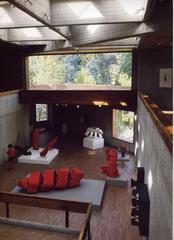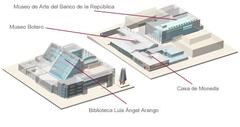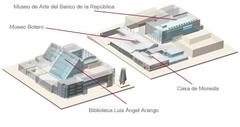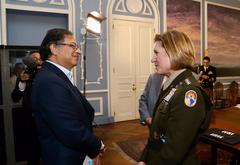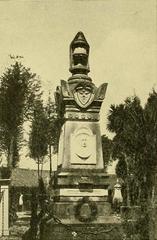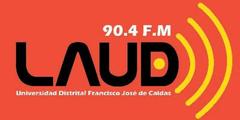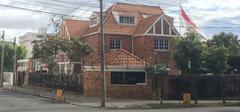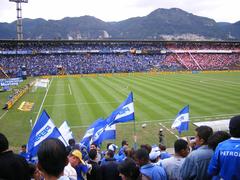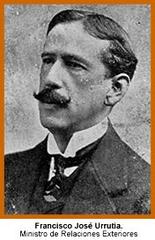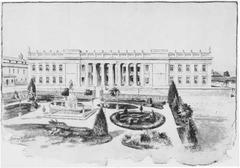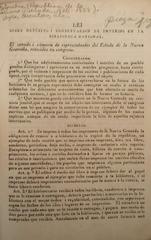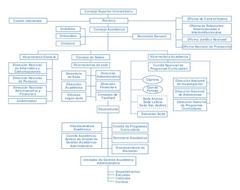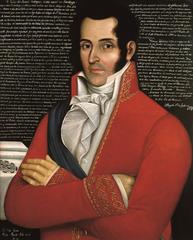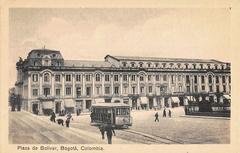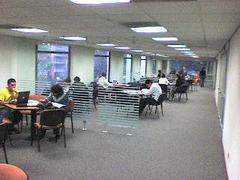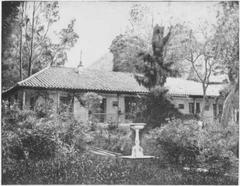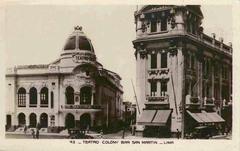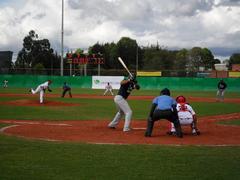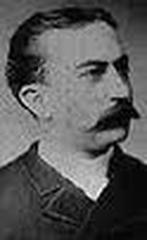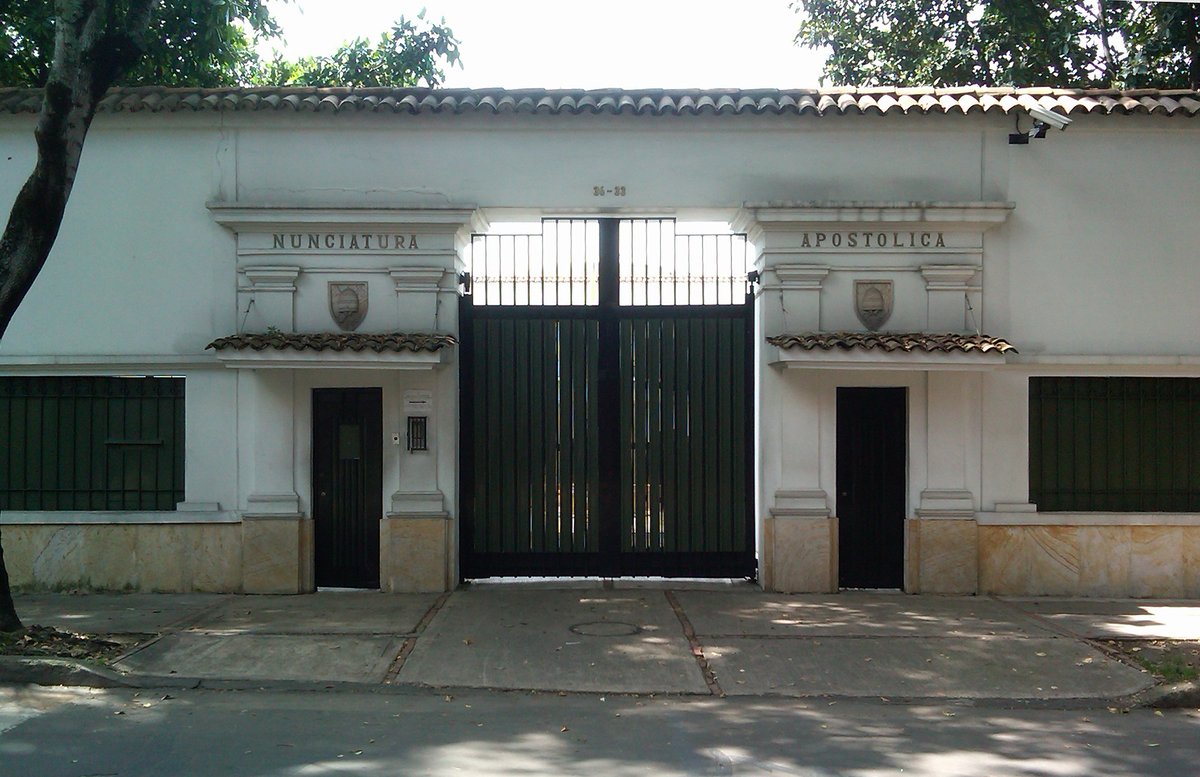
Apostolic Nunciature to Colombia Bogotá: Visiting Hours, Tickets, and Travel Guide
Date: 15/06/2025
Introduction
The Apostolic Nunciature to Colombia in Bogotá is a distinguished institution representing the diplomatic and spiritual connection between the Holy See and Colombia. Steeped in history and cultural significance, the Nunciature is set in the city’s Teusaquillo district, surrounded by notable embassies and historic landmarks. While public access is generally restricted, its architectural beauty, role in Colombia’s history, and proximity to significant sites make it a point of interest for travelers, scholars, and those interested in ecclesiastical diplomacy.
This guide offers detailed insights into the Nunciature’s origins, architecture, diplomatic functions, and practical visitor information. Whether you are seeking to understand its cultural importance or looking to explore the surrounding area, use this resource to plan a meaningful and respectful visit. For official updates, refer to the Vatican Press Office and Official Bogotá Tourism.
Table of Contents
- Introduction
- Historical Background
- Architectural and Cultural Significance
- Role in Colombian Society
- Papal Visits and Milestones
- Diplomatic Functions and Contemporary Relevance
- Visiting the Nunciature: Hours, Tickets, and Accessibility
- Nearby Attractions and Travel Tips
- Frequently Asked Questions
- Conclusion
- References
Historical Background
The Apostolic Nunciature in Bogotá has served as the Vatican’s diplomatic mission to Colombia since the late 19th century. Its establishment marked a critical phase in post-independence Colombia, strengthening church-state relations and providing a foundation for ecclesiastical diplomacy in Latin America. Initially tasked with mediating between the Church and government, the Nunciature’s influence has grown to encompass humanitarian advocacy, peacebuilding, and the support of human rights.
The original Nunciature was located in the city center but was destroyed during the 1948 Bogotazo riots. The mission was subsequently relocated to its current site in the Teusaquillo district (Nunciatura Official Site).
Architectural and Cultural Significance
The Nunciature’s building is a harmonious blend of neoclassical and colonial styles, reflecting both European ecclesiastical traditions and Colombian heritage. The two-story structure is surrounded by lush gardens, mature trees, and is set back from the street to ensure privacy and dignity. The façade features stucco walls, tiled roofs, large windows, and wrought-iron ornamentation, while the interior includes reception halls, meeting rooms, and a private chapel adorned with religious art and portraits of past popes.
As a diplomatic mission, the Nunciature is fortified with perimeter fencing and controlled access, but the exterior can be appreciated from the street. Periodic renovations have preserved its historical character while ensuring modern standards of safety and accessibility (EmbassyPages).
Role in Colombian Society
Throughout its history, the Nunciature has played an important role in Colombia’s religious and political spheres. It has mediated during national crises, supported peace processes, and promoted social justice. The Vatican’s influence, exercised through the Nunciature, has supported humanitarian initiatives and defended the rights of vulnerable groups in Colombia.
Papal Visits and Milestones
The Nunciature has hosted several papal visits, reinforcing its importance in both ecclesiastical diplomacy and Colombian society. Pope Paul VI’s 1968 visit marked the first papal trip to Latin America, followed by Pope John Paul II in 1986 and Pope Francis in 2017. These visits have underscored themes of reconciliation, peace, and spiritual renewal, and have often coincided with pivotal moments in Colombia’s national journey (Vatican Press Office 2017 Visit).
Diplomatic Functions and Contemporary Relevance
The Apostolic Nuncio, as the Vatican’s ambassador, represents the Holy See to both the Colombian government and the local Church hierarchy. Duties include facilitating Vatican-Colombian Church communication, supporting bishop appointments, and participating in peacebuilding efforts. The Nunciature also offers neutral ground for dialogue during political or social crises and is a site for official Church-state meetings (Pope Francis and CELAM Meeting).
Visiting the Nunciature: Hours, Tickets, and Accessibility
General Access
Due to its diplomatic nature, the Apostolic Nunciature is not open for public tours. There are no tickets sold, and regular visiting hours apply only to official appointments or ecclesiastical business. On rare occasions, such as papal visits or special religious ceremonies, the Nunciature may host events with limited public participation. Public viewing and photography are permitted from the sidewalk, provided visitors respect the building’s security and do not block entrances.
Location and Getting There
- Address: Carrera 15 Nº 36-33, Teusaquillo, Bogotá (EmbassyPages; Nunciatura Official Site)
- Access: Easily reached by TransMilenio bus lines, taxis, or on foot. Street parking is limited; public transport is recommended.
- Neighborhood: Teusaquillo is safe and well-maintained, with embassies, parks, restaurants, and cultural sites nearby.
Accessibility
Wide sidewalks and proximity to major avenues make the area pedestrian-friendly. The Nunciature itself complies with basic accessibility standards, but visitors requiring special accommodations should notify staff in advance.
Nearby Attractions and Travel Tips
While you cannot enter the Nunciature, its location offers access to several top Bogotá attractions:
- Plaza de Bolívar: The city’s historic heart, surrounded by government buildings and the Cathedral.
- Casa de Nariño: The presidential palace, available for guided tours by appointment.
- Museo del Oro: Colombia’s renowned Gold Museum.
- La Candelaria: A vibrant colonial district with museums, churches, and cultural venues.
- National Museum of Colombia and Biblioteca Luis Ángel Arango are also within easy reach.
Travel Tips:
- Visit during daylight for the best experience and safety.
- Dress modestly when touring religious or diplomatic sites.
- Use authorized taxis or public transportation.
- Remain aware of local advisories, especially during demonstrations or special events.
Frequently Asked Questions (FAQ)
Q: Can I tour the Apostolic Nunciature?
A: No, tours are not available to the public. Access is restricted to official appointments.
Q: Are tickets required to visit?
A: No tickets are needed; the Nunciature is not open for public tours.
Q: What are the visiting hours?
A: Standard hours for official business are Monday to Friday, 09:30–12:00 and 14:30–17:00. Public access is limited to the exterior only.
Q: Is photography allowed?
A: Yes, you may photograph the exterior from public sidewalks, but avoid blocking entrances or causing disruptions.
Q: What other sites are nearby?
A: Plaza de Bolívar, Casa de Nariño, Museo del Oro, and La Candelaria are all nearby and worth visiting.
Conclusion
The Apostolic Nunciature to Colombia is a landmark of diplomatic and religious significance, symbolizing the historic relationship between the Holy See and Colombia. While interior access is reserved for official purposes, visitors can admire its architecture and explore the rich cultural surroundings of Bogotá’s Teusaquillo district. Combine your visit with tours of nearby historical sites to experience the best of Colombia’s Catholic heritage and vibrant urban culture.
For up-to-date information, official contacts, and detailed travel guides, consult the Nunciature’s website, Bogotá Tourism, or the Holy See’s diplomatic directory.
References
- Vatican Press Office 2017 Visit
- Official Bogotá Tourism
- Nunciatura Official Site
- Holy See’s Diplomatic Directory
- Colombian Episcopal Conference
- Vatican News: Pope Francis Colombia Visit
- GCatholic – Colombia Dioceses
- EmbassyPages: Apostolic Nunciature
- Pope Francis and CELAM Meeting


